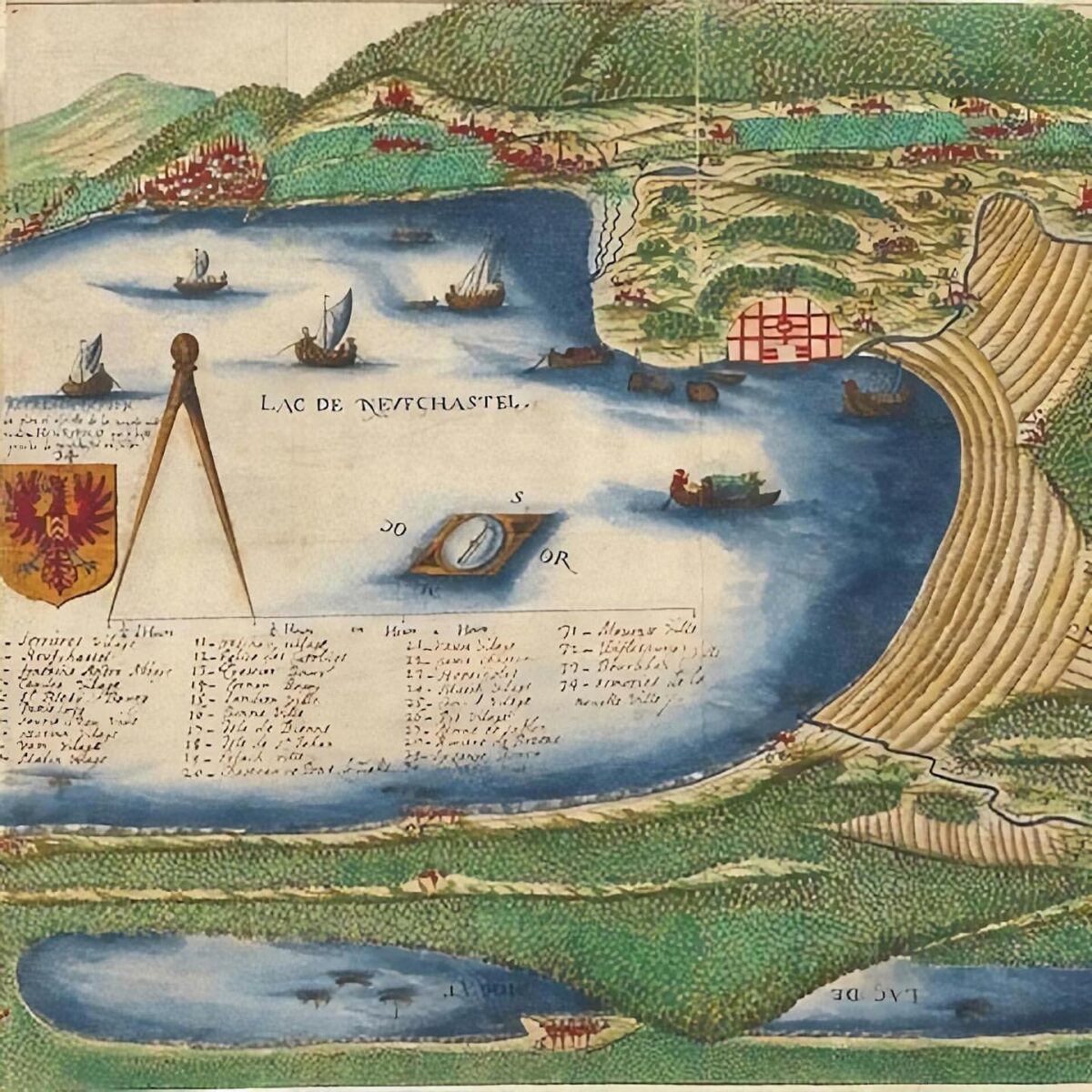
6.1
The next stop on our tour of Swiss Utopias takes us back in time to Henripolis in the 17th century, a planned ‘open’ city considered too radical for its time. In 1625, the prince of Neuchâtel, Henri II d’Orléans-Longueville, granted the local government permission to build a new town on the shore of Lake Neuchâtel, between Marin and Epagnier. The project aimed to create a trading city that could compete with Neuchâtel and reaffirm the prince’s power over the region, which had been waning due to the city’s political establishment and the increasingly affluent Protestant bourgeoisie. Henripolis’s planned location would make it a hub for trade and commerce in the region, connected to the North Sea via the Thièle, Aare, and Rhine rivers and to the Mediterranean Sea by land —and very profitable for the prince personally. Unsurprisingly, the prince approved this utopian town to be named after himself, and the idea of Henripolis was born. However, as we’ll explore this week, the spirit of openness that the city was built upon was a cause for alarm for the political powers of the day.

6.2
From its beginnings, the idea of Henripolis was founded on what was then a very modern concept of rights for all of its citizens — enshrined in the founding charter that guaranteed the welfare and prosperity of the populace. This included freedom of religion and exemption from military service, which was a very radical idea during the Thirty Years’ War that was happening during that time. To boost commerce and revenue, the city would have the right to levy customs duties and taxes, while continuous trade fairs could be organised throughout the year by merchants. The number of hotels would not be limited, and canals and boats could be built and used without regulation, enabling a thoroughfare of traders and visitors. Likewise, the city’s planning was modelled on a 17th-century urban ideal: designed as a polygonal semicircle with orthogonal streets to reflect the functional hierarchy of its 13,000+ inhabitants. The main north-south artery of the town was planned to connect the palace to the port, and halfway between the port and the castle was the town hall. Elsewhere, two churches were located to the east and west, with fountains were provided at almost every intersection as an expression of hygiene and aesthetics. In 1625 and 1626, the government published multi-page advertising brochures in German, French and Dutch to attract potential new citizens. The favourable location of the new town within Europe, the plan of the town itself, the beauty of the surroundings and, of course, the privileges and freedoms granted were all duly emphasised. The advertising text was illustrated with three maps like the one in this post: a map of Western Europe showing the trade routes, a bird’s eye view of Lake Neuchâtel and a plan of the town.

6.3
Despite its apparent utopian appeal, the city of Henripolis was doomed to failure, due to political disputes and a surprising lack of interest from potential citizens. The city of Bern, as the dominant power of the Neuchâtel region, refused to allow the town’s construction to begin so that its own commercial interests would be protected from this potential rival. Moreover, the councillor Jean Hory, who promoted the project in Neuchâtel, couldn’t find enough landowners willing to sell their land and move to the new city. To top it all, the advertising campaign failed to strike a chord with would-be citizens. However, historians have argued that Henripolis was a singular and forward-looking project due to the religious, commercial and trade freedoms that would have been achieved, which only became commonplace some 200 years later after the Enlightenment. Moreover, the foundation of such a city was even more ambitious in the context of the Thirty Years’ War, which would become one of the bloodiest religious wars in Europe. Ultimately the people of Neuchâtel just weren’t ready to embrace the spirit of openness foreseen in Henripolis. It was certainly too ambitious a project for the Neuchâtel political system, but it is an important entry in Switzerland’s history of utopian thinking.